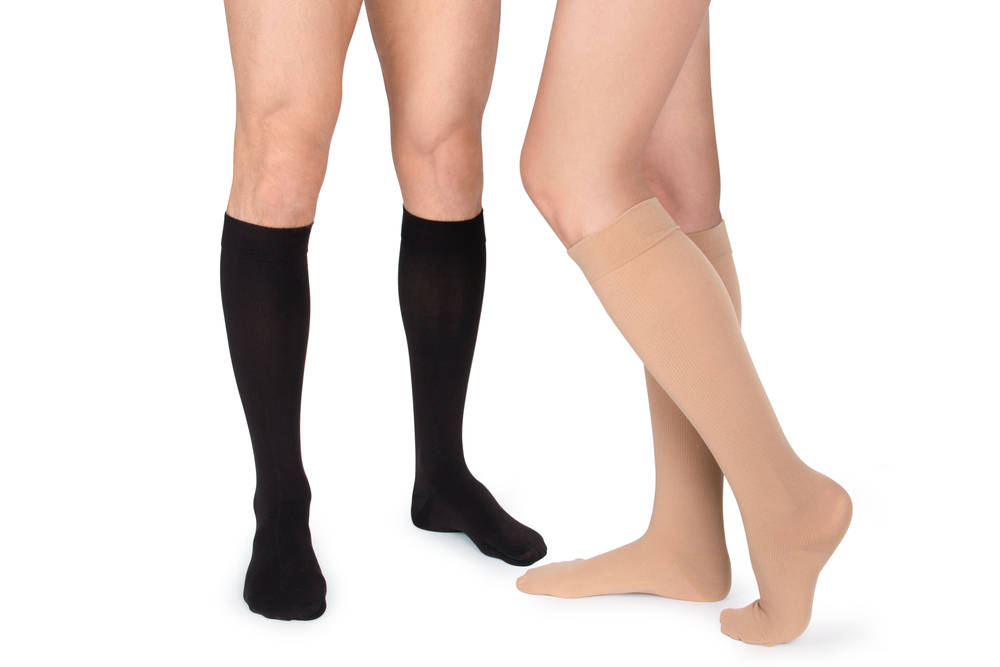How Does Compression Therapy Work?

What Is Compression Therapy?
Compression therapy is the use of compression garments, such as stockings or compression bandages, that are designed to reduce edema or prevent symptoms from getting worse. It is often used to treat varicose veins, to improve recovery after an injury, to prevent blood clots, and in the treatment of several types of edema, including lymphedema. However, compression therapy is more than just wrapping a bandage tightly around the affected area or wearing a pair of stockings a few sizes too small. In order to get real results, it is important to see a licensed professional to find the right fit and compression to help with your specific needs.
How Does Compression Therapy Work?
Wearing the correct compression garments with the right amount of pressure has a proven effect on several edemas, including lymphedema. Compression therapy is often considered a key part of complex decongestive therapy (CDT), and it is used in both the decongestive phase and the maintenance phase.
The primary goal of compression therapy is to reduce the signs and symptoms of lymphedema. This is done by applying constant pressure from the outside of the limb through the use of compression garments such as compression stockings or socks. These garments provide a gradient of pressure, unlike normal garments that provide a constant pressure, in order to help push lymphatic fluid from the limbs to the center of the body, where it can be drained properly. Pressure is highest at the wrists or ankles, the parts furthest from the body, and gets progressively lighter as it moves inward.
Understanding the Lymphatic System
In order to understand how lymphedema affects the body, first we need to understand the lymphatic system. The lymphatic system runs parallel to blood vessels all throughout the body, and it carries excess fluid known as “lymph.” This fluid is carried to the body, where it can be filtered, concentrated, and reintroduced back into the blood system for circulation. The lymphatic system is made up of lymph nodes, vessels, and capillaries that help to move lymph between cells and throughout the body. Lymph is naturally transported by normal bodily actions such as muscle movement, pulsation from your arteries, and breathing. However, sometimes this is not enough. Either the body can create too much lymph to be naturally moved and drained, or parts of the lymphatic system itself can be damaged or underperforming, causing excessive buildup of lymph, resulting in soreness and swelling and leaving you prone to infections.
What Does the Lymphatic System Do?
The lymphatic system’s primary goal is to fight off infections. It is part of the immune system and works to produce white blood cells, which defend your body against bacteria, viruses, and foreign material inside the body. The lymphatic system also works to absorb fat (lipids) from the gut and transport them throughout the bloodstream. Lastly, this system is in charge of gathering excess fluids and waste products made by the body’s cells.
When the lymphatic system is damaged or blocked, it can cause a collection of fluid, resulting in swelling in the affected area.This swelling is called lymphedema, and it is most common in the arms and legs. Lymphedema is a long-term (chronic) disease that can get progressively worse over time if not treated properly. Long-term issues that can arise from lymphatic disorders or damage include lymphorrhea, which is when lymphatic fluid leaks outside the body, and fibrosis, which involves thickening of the skin or scar tissue formed from swelling.
Other Benefits of Medical Compression
Medical compression therapy offers a wide range of other benefits outside of treating lymphedema. It can also be used to:
- Prevent swelling in the legs for people who stand or sit for long periods of time
- Manage and prevent the spread of varicose veins
- Help with leg symptoms during pregnancy
- Prevent venous thromboembolism in people who are immobile
- Improve healing of leg ulcers and prevent them from coming back
- Provide maintenance therapy for lymphedema
|
|
|